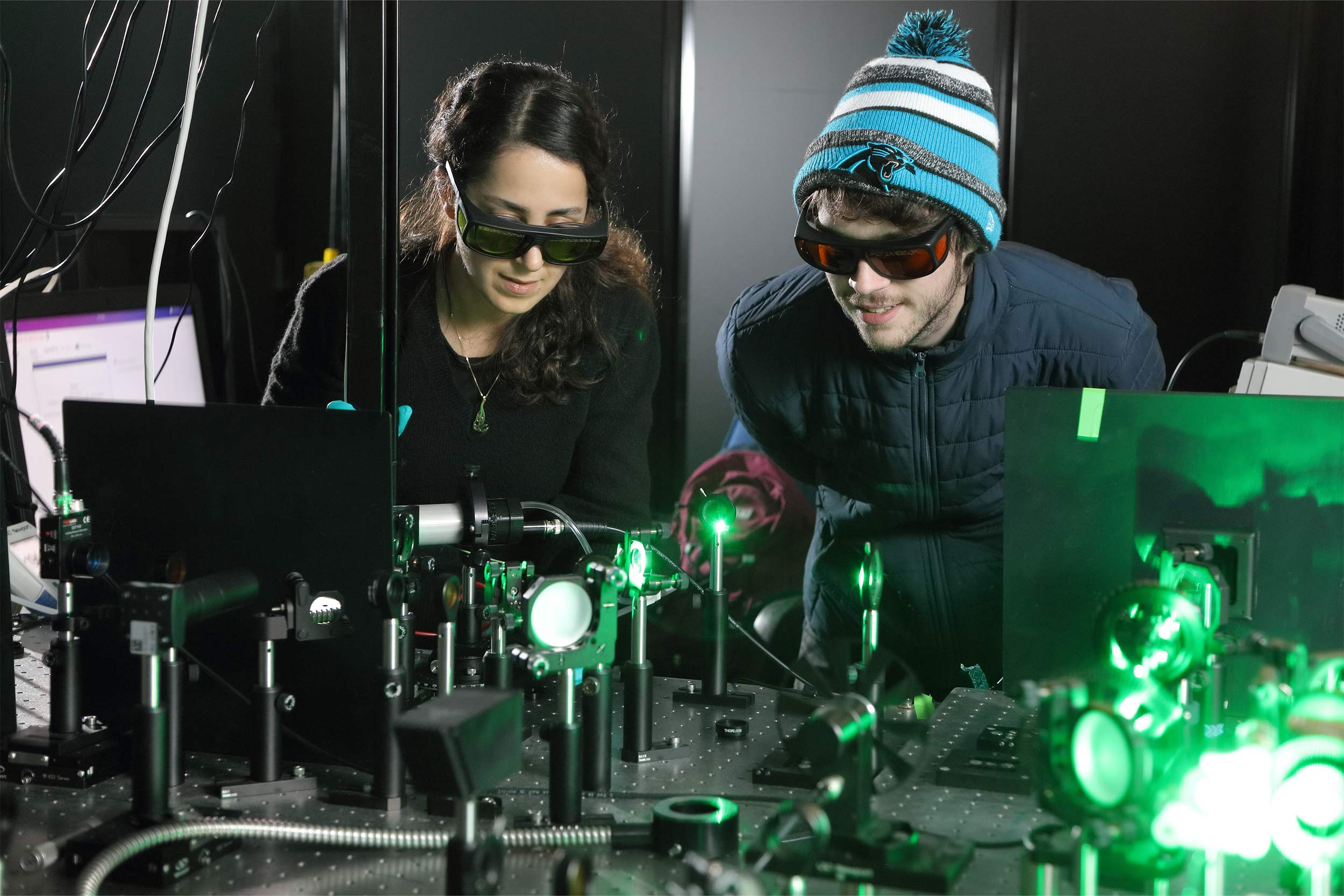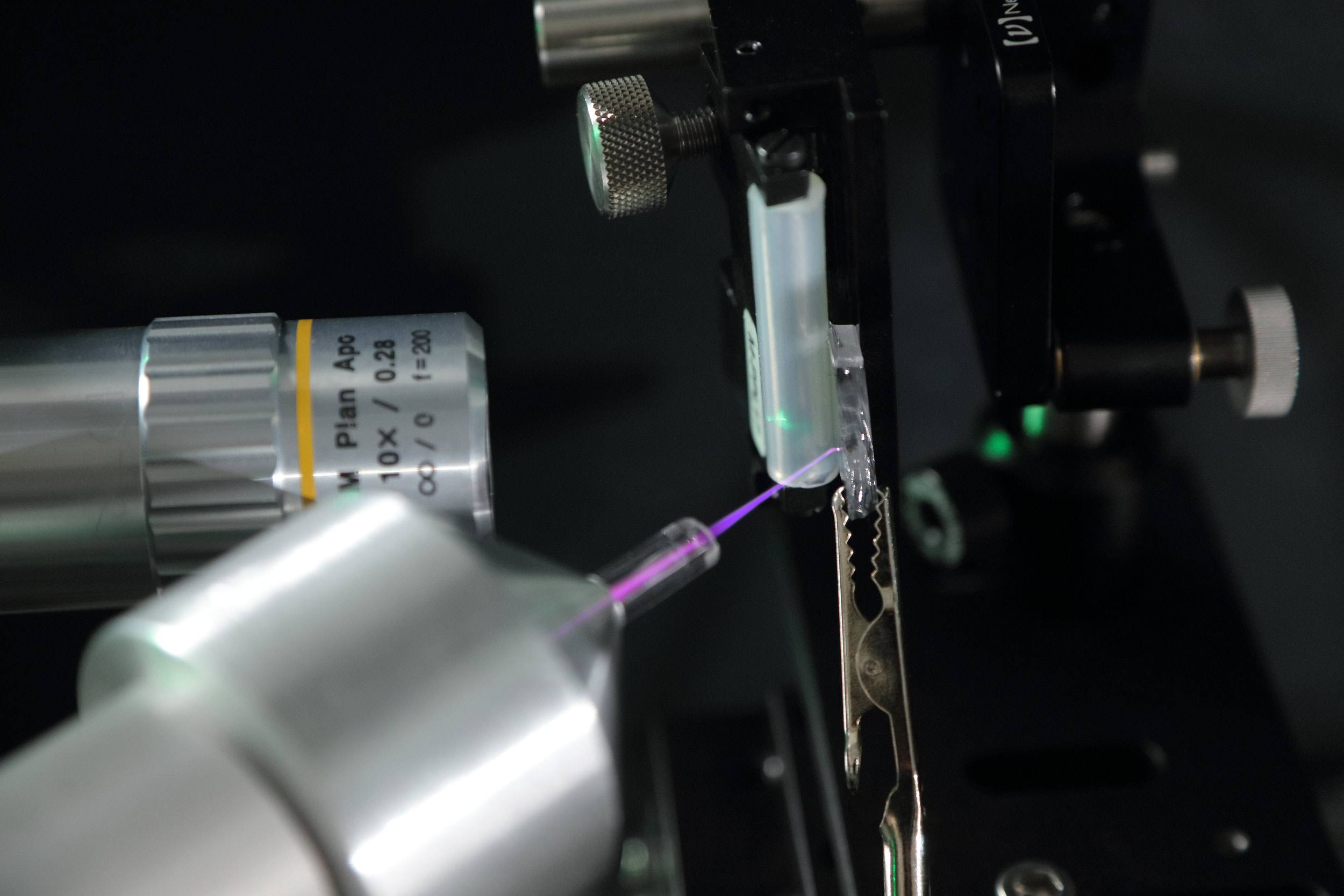Though plasma screen televisions were once a thing, then phased out, don’t let that fool you. Plasma is increasingly being used in technology. It’s already utilized in the engines of many of the Air Force’s speediest jets. The plasma assists combustion, improving speed and efficiency.
But Hopkins pictures plasma also being used in the interior of the craft.
The typical solution for air and space electronics has been a “cold plate,” which conducts heat away from the electronics toward radiators, which release it. For advanced electronics, however, that may not always be sufficient.
Hopkins thinks the revised setup may be something like a robotic arm that roves in response to temperature changes, with a short, close-up electrode that zaps hot spots.
“This plasma jet is like a laser beam; it’s like a lightning bolt,” Hopkins said. “It can be extremely localized.”
The Plasma Enigma
Cool fact: Plasma can reach temperatures as hot as the surface of the sun. But it also seems to have this weird characteristic – one that would appear to violate the second law of thermodynamics. When it strikes a surface, it actually chills before heating.
Hopkins and his collaborator, Scott Walton of the U.S. Navy Research Laboratory, made the unexpected discovery several years ago, just before the pandemic hit.
“What I specialize in is doing really, really fast and really, really small measurements of temperature,” Hopkins said of his custom-made microscopic instruments, which can record specialized heat registries.
In their experiment, they fired a purple jet of plasma generated from helium through a hollow needle encased in ceramic. The target was a gold-plated surface. The researchers chose gold because it’s inert, and as much as possible, they wanted to avoid surface etching by the focused beam, which could skew the results.
“So when we turned on the plasma,” Hopkins said, “we could measure temperature immediately where the plasma hit, then we could see how the surface changed. We saw the surface cool first, then it would heat up.
“We were just puzzled at some level about why this was happening, because it kept happening over and over. And there was no information for us to pull from because no prior literature has been able to measure the temperature change with the precision that we have. No one’s been able to do it so quickly.”
What They Realized
What they finally determined, in association with then-UVA doctoral researcher John Tomko and continued testing with the Navy lab, was that the surface cooling must have been the result of blasting an ultrathin, hard-to-see surface layer, composed of carbon and water molecules.
A similar process happens when cool water evaporates off of our skin after a swim.
“Evaporation of water molecules on the body requires energy; it takes energy from body, and that’s why you feel cold,” the professor said. “In this case, the plasma rips off the absorbed species, energy is released, and that’s what cools.”
Hopkins’ microscopes work by a process called “time-resolved optical thermometry” and measure something called “thermoreflectance.”
Basically, when the surface material is hotter, it reflects light differently than when it’s colder. The specialized scope is needed because the plasma would otherwise obliterate any directly touching temperature gauges.
So how cold is cold? They determined they were able to reduce the temperature by several degrees, and for a few microseconds. While that may not seem dramatic, it’s enough to make a difference in some electronic devices.
After the pandemic delay, Hopkins and collaborators published their initial findings in Nature Communications last year.
Then the question became: Could they get a reaction to be colder and last longer?
Refining the Freeze Ray
Previously working with the Navy’s borrowed equipment – so lightweight and safe it was often used for school demonstrations – the UVA lab now has its own setup, thanks to the Air Force grant.
The team is looking at how variations on their original design might improve the apparatus. Doctoral candidates Sara Makarem Hoseini and Daniel Hirt are considering gases, metals and surface coatings that the plasma can target.






